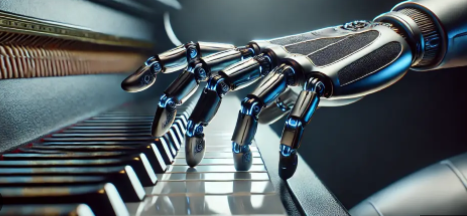The evolution of music, a journey from the rhythmic bone flute to the digital audio workstation (DAW), has always been catalyzed by technology. The latest and most seismic shift is the integration of Artificial Intelligence (AI), which moves beyond being a mere tool to becoming a co-creator. This partnership is not just rewriting songs; it’s rewriting the rules of the entire musical ecosystem, compelling artists, producers, and the industry to grapple with profound ethical and creative questions.
The Human-AI Symbiosis: An Endless Well of Ideas
At its core, generative AI in music is an algorithmic muse. Trained on vast datasets of existing compositions—from Bach fugues to Bollywood beats—it can identify patterns and structures, allowing it to compose, orchestrate, and produce music instantly. This capability is fundamentally changing the creative workflow:
- Overcoming Creative Block: A composer can input a mood, a genre, or even a simple text prompt (e.g., “a melancholic jazz piano solo in the style of Bill Evans”) and receive a fully realized starting point in seconds. AI acts as an accelerant for ideation, pushing artists past conventional thinking.
- Democratization of Production: AI-powered mixing and mastering services, like LANDR, allow independent musicians to achieve professional, studio-quality sound without the need for expensive engineers or equipment. This lowers the barrier to entry, enabling a new wave of global artists to release high-fidelity work.
- Intelligent Sound Design: Producers are leveraging AI to generate entirely new sonic textures and instrumental ideas that would be time-intensive or impossible to synthesize manually. This is creating hybrid genres and unique soundscapes that are redefining the sonic frontier.
The relationship isn’t replacement; it’s augmentation. Human artists retain the role of the ultimate editor, curator, and visionary, selecting the best AI-generated elements and weaving them into a cohesive, intentional artistic statement.
The Unfinished Score: Ethical and Legal Dissonance
Rauf Hameed says while AI offers unlimited creative possibilities, its rapid adoption has created significant ethical and legal challenges that the industry must address to ensure a sustainable future for human artists.
- The Copyright Conundrum: The most pressing issue is the training data. Many AI models are trained on copyrighted music without the explicit consent of the creators, raising questions about infringement and fair compensation. When an AI generates a track that sounds suspiciously like an existing hit, who is responsible? New legislation and transparency standards are urgently needed to protect intellectual property.
- Authenticity and Transparency: As AI-generated vocals become indistinguishable from a human singer, the industry faces the challenge of “deepfakes” and voice cloning. Artists like Grimes have offered to split royalties for the use of their cloned voice, but this necessitates industry-wide agreements on consent, credit, and proper attribution. Audiences and consumers deserve to know whether the music they are consuming was created by a human or an algorithm.
- The Devaluation of Human Artistry: If vast libraries of royalty-free, AI-generated background music become the norm for commercials and media, there is a legitimate concern about the displacement of session musicians and independent composers. The industry must champion models where AI is used to assist the human artist, not replace them, ensuring that the unique, emotional value of human-created music is not commoditized down to zero.
The Future of the Composer: From Note-Writer to Curator
The evolution driven by AI suggests that the role of the musician is changing from a sole note-writer to a more expansive, strategic one: a “Creative Director” of sound.
The most successful artists in this new era will be those who master the art of the prompt, who understand the nuances of the AI models, and who can infuse the resulting algorithmic output with their own deeply human, irreplicable emotional narrative.
AI, the conductor in the machine, offers a dazzling orchestra of possibilities. It is up to the human artist to pick up the baton, direct the performance, and ensure that the resulting music remains a profound reflection of the human spirit. The evolution is here, and the music is waiting.
